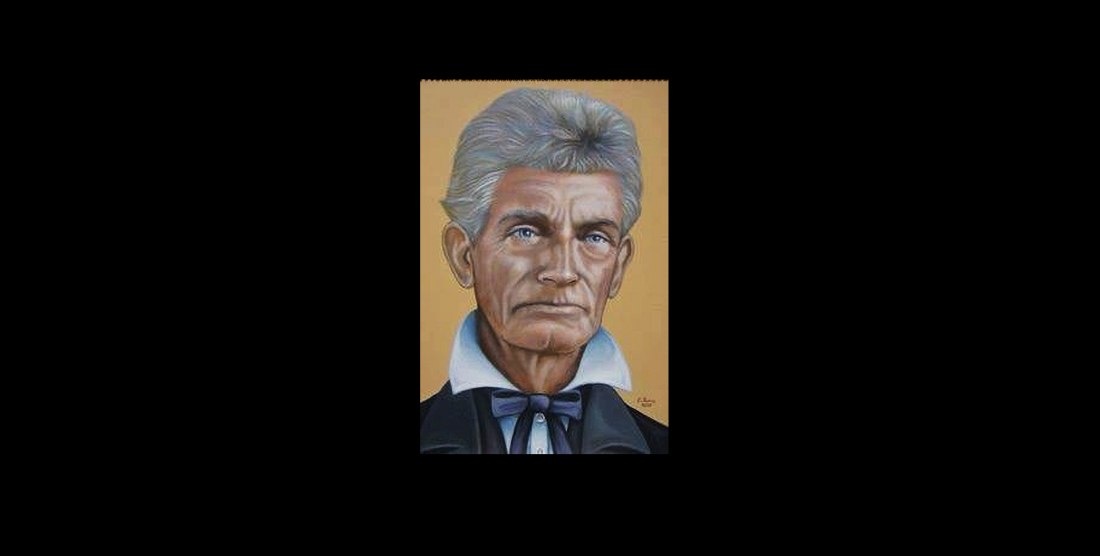By Carlos “Carlito” Rovira
On May 9, 1800 one of the greatest representatives of oppressed and exploited people was born in Torrington, Connecticut. His name was John Brown.
John Brown did not perceive himself as a revolutionary, but was instead, according to him “doing the work of God”. However, his resolute stance against the widely accepted and legally sanctioned system of slavery made him in every sense a revolutionary.
Brown was a very religious man who saw the enslavement, torture and rape of Black people as an abomination of Christian beliefs and doctrine. The slave owning class used religion as an ideological pillar to justify their cruel practice, while most of organized religions were silent or supported slavery outright.
The exemplary acts of courage as well as the humanity John Brown exerted has secured him an eternal place of honor in the archives of the class struggle in the United States. His militant disposition towards the practices of this system contrasted tremendously from other abolitionists who tended to be non-threatening with their passive, reformist approach towards slavery.
John Brown sincerely believed that since slavery was upheld with violent force it was absolutely necessary to overthrow it with the same intention. He led a number of attacks such as the Battle of Black Jack and the Battle of Osawatomie, in which slave owners and supporters of slavery were confronted for their heinous actions.

On October 16, 1859, Brown and a large group of men, that included two of his sons and former slaves, launched a raid at the U.S. Army Harper’s Ferry armory in Virginia. The site became known later in history as “John Brown’s Fort”. The plan was to capture the large stockpile of weapons and distribute them to Black people throughout the region in preparation for battle.
The legendary Harriet Tubman, who had intricate familiarity with the Harper’s Ferry region, provided Brown with detailed information about the armory. Harriet Tubman and John Brown had become friends and had great mutual respect for one another. Tubman eventually helped to recruit brave and willing men for Brown’s planned raid at Harper’s Ferry. As a ode to her leadership skills, Brown gave Tubman the nickname “General Tubman”.
Tragically, due to many tactical mistakes made by the liberators, the local militia of white citizens was allowed time to galvanized forces in response to the attack. Under the leadership of then U.S. Army Brevet Colonel Robert E. Lee, they surrounded the armory. Soon after a bloody gun battle ensued for two days. Due to Robert E. Lee’s skills in military tactics and the superior weaponry of the U.S. Army, John Brown and his men were over taken and arrested despite many casualties on both sides.


John Brown’s eventual execution by hanging ultimately proved to be the beginning of the end for slavery in the United States. Brown succeeded in legitimizing the use of armed force as a viable option to end slavery. The story of John Brown and the Battle of Harper’s Ferry become a critical point in U.S. history, in which the country came to the opening gates of the Civil War.
Similarly, this courageous act was arguably mirrored by Cuba in the 1953 Attack on the Moncada Barracks led by Fidel Castro. Although both battles ended with the loss of many courageous fighters, each of these events ignited the flames of a revolution.

To this day, John Brown’s persona continues to be the target of vilification and ridiculed by bourgeois historians. Many historians depict Brown as fanatical and unstable. John Brown’s life is often distorted to seemingly discredit his passion for the abolitionist cause and dilute his relevance to American history, especially the circumstances of race relations today.
The ruling class in this country fear more than anything the prospect of mass rebellion. The Black struggle has inspired every oppressed and exploited sector of the population. It is no wonder why the Black Panther Party and other African American political expressions were targets of repression whenever they became recognized among broad sectors of the population.
It makes sense why those with power and wealth today would continue to dread the memory of John Brown as they would the contributions of revolutionaries such as Malcolm X, Che Guevara, Harriet Tubman, Lolita Lebron, Fidel Castro or V.I. Lenin.

John Brown was never critical nor was he defensive about the emancipation aspirations and self-identity of Black people. These sentiments which later on developed to become the ideological pillars of Black nationalism were deeply rooted in the horrific experiences of slavery. By all historical accounts, John Brown did his part to defend and enhance these sentiments.
Brown set the bar for White people to embrace their obligation to the fight for Black emancipation, if they were to honestly consider themselves revolutionaries or socialists. White privilege also existed during John Brown’s lifetime in the form of slavery. Although conditions have somewhat changed from that era, the obligations of white progressives to fight white supremacy has not.
Claiming to be “anti-racist” is not enough if there is not action to match. In other words, being anti-racist today means engaging in an uncompromising struggle against all forms of white privilege. Because of historical circumstances, there cannot be equal responsibility among the races.
In order for the first steps to be taken against racism in the U.S., the white population must raise the anti-racist banner as their very own. This disposition is precisely what John Brown was committed to live by. The standards required for white progressives in the struggle for fundamental change do not have to be re-created but updated based upon the blueprint established long ago by John Brown.
